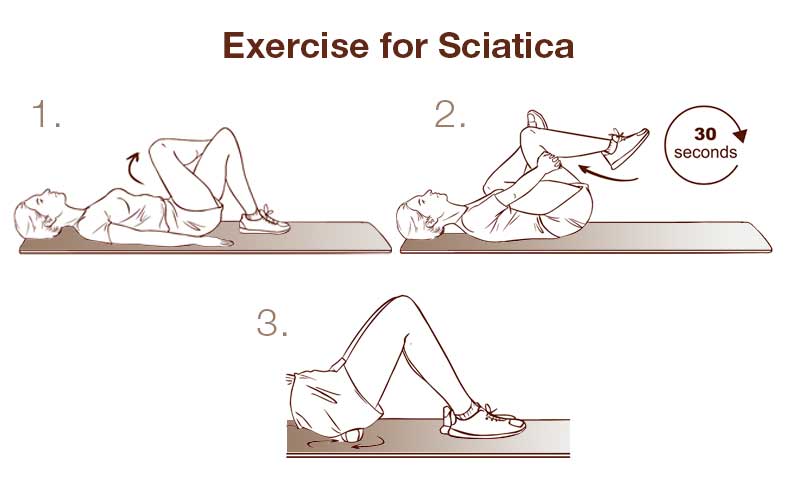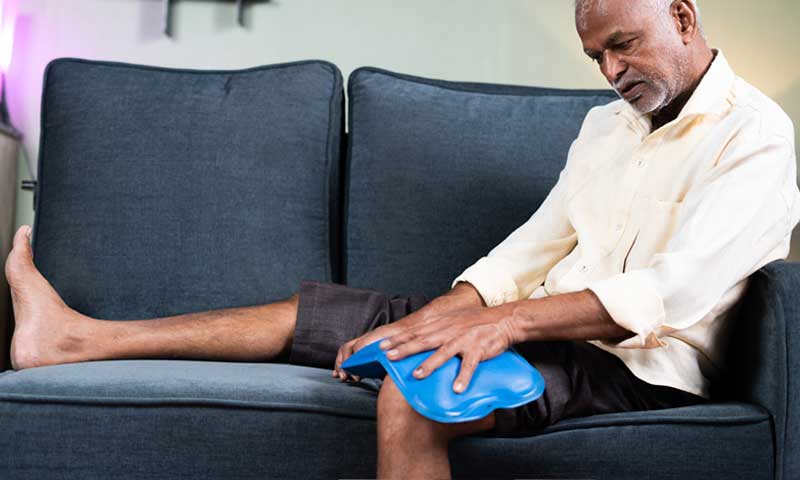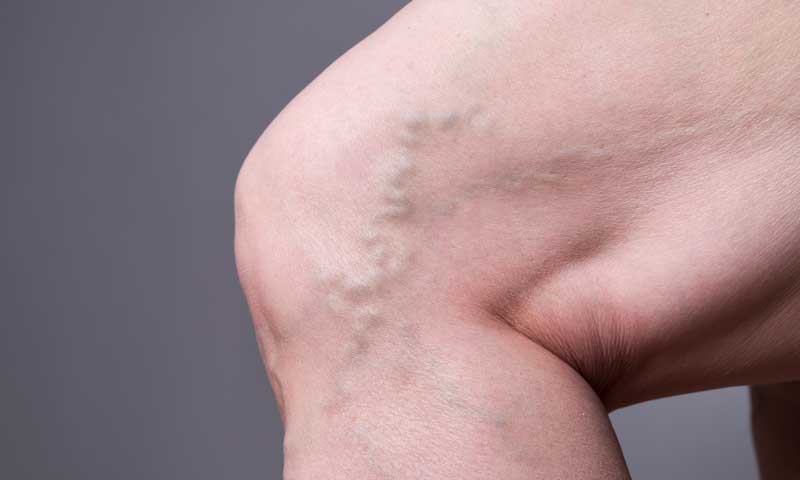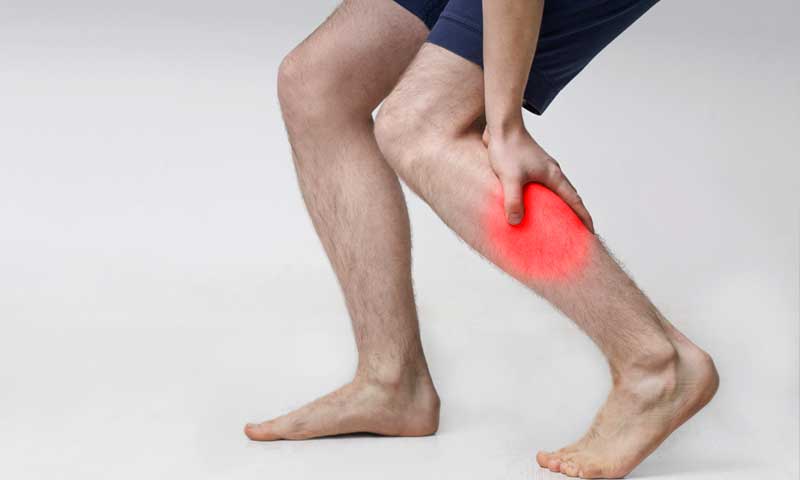We all want to take good care of our health. But no one wants to visit a doctor unnecessarily. However, you may wonder with leg pain—when should I see a doctor?
Here are helpful facts about when to contact a doctor about your leg pain.
Legs Are Complex
Legs comprise many biological structures, including veins, bones, tendons, cartilage, and nerves.
- Vascular problems affect the blood vessels, including arteries and veins. Endovascular and vascular surgeons specialize in vascular problems in the body, excluding the brain and heart.
- Musculoskeletal problems involve bones, ligaments, joints, and tendons. An orthopedic surgeon or orthopedist generally treats them.
- Neurological problems involve nerves and the nervous system. Neurologists specialize in these medical issues.
Of course, the doctor or specialist to treat your leg pain depends on your specific leg problem.
If You don’t Know the Cause of Your Leg Pain – Where to Start
If you don’t know the cause of your leg pain, start by visiting a general practitioner. They will direct you to the best specialist for treatment if necessary.
At times, the medical problem isn’t in your leg at all—even if the pain is. Sometimes a person feels leg pain when the pain source is in another part of their body.
Sciatica pain is a good example of this; leg pain originates from a nerve pathway that starts in the patient’s spine.
Sciatica is often treated by exercise but see your general practitioner or a neurologist.

Sometimes, the cause of leg pain is obvious, such as with varicose veins. You can see the twisted veins right there on your leg. And you can feel the discomfort or pain.
If this is the case, you can start by immediately contacting an endovascular surgeon to assess and treat the problem.
So, let’s first look at the onset of the pain to determine what action you should take.
Acute or Chronic Leg Pain
How a pain starts, and the duration of the pain tells you something about the cause of your leg pain and whether you should contact a doctor.
Acute pain is sudden, sharp, and intense and lasts awhile. It warns of an immediate problem in the body and calls for immediate attention.
Chronic pain may start off more slowly and gently but can worsen and become a daily irritant. If you don’t know the cause of your chronic pain, and it has lasted for several days, it’s time to see a doctor.
But unless you’re in great discomfort, it’s probably fine to just schedule an appointment.
When To See a Doctor Immediately
If There’s Acute Leg Pain from an Injury
If you have pain in your leg caused by a deep cut, or an injury that leaves an exposed tendon or bone, immediately get to an emergency room or urgent care.
Not only are you prone to developing a serious infection, but you need emergency care to ensure your leg heals properly.
X-Rays or other tests may help your doctor make a complete diagnosis and then treat the leg properly so it can heal completely.
If You Have Any of the Following Unexplained Leg Pain Symptoms
You may feel it’s safe to ignore these symptoms for a few days, but it’s not.
Get immediate medical care if you have:
- Swollen legs accompanied by breathing problems
- Sudden inability to stand or put pressure on leg
- Sudden severe leg pain
- Calf pain after sitting for a long time—often after a long car trip or plane ride

If You Suspect Deep Vein Thrombosis (DVT)
The most common reason people experience calf pain is from a muscle injury. However, calf pain can be a sign of DVT—especially if it occurs shortly after a lengthy plane or car trip.
A deep vein thrombosis is a blood clot in a deep vein, usually in a leg. The blood clot can travel and lodge in the lungs, making this a potentially life-threatening situation.
You want this problem treated as soon as possible. The usual treatment is medication and wearing compression stockings.
Pain, cramping, soreness, or tenderness in the calf muscles are the most common DVT symptoms. You probably won’t feel a sharp or stabbing pain. You may think you have a muscle cramp but are actually feeling the formation of the deep vein clot.
Other DVT symptoms include swelling, redness, or discolored skin in the affected leg. The leg may also feel warm to the touch.
If you experience any of these symptoms shortly after your plane ride, contact your doctor. If you can’t reach your doctor, seek emergency care immediately.
Time to See a Doctor – But It’s Not an Emergency
Chronic unexplained leg pain is also a reason to see a doctor.
Call for an appointment if your leg pain is:
- Uncomfortable
- Persistent
- Getting worse
- Not going away after a few days
Sometimes All Your Leg Needs is Rest and TLC
Many of us experience leg pain from time to time. This includes muscle soreness from overuse of your legs or the occasional leg cramp.
Muscle cramps can be extremely painful.
They can be caused by:
- overuse of muscles in hot weather
- certain medications
- diet
- dehydration.
Gentle massaging and stretching can help leg cramps, as will a heating pad.
If you’ve been using your legs a lot, it’s common to have sore leg muscles and minor swelling.

For this, try to stay off your legs. It will help to apply ice to the swollen or painful area for 20 minutes to reduce inflammation, three times a day.
Over-the-counter pain relievers, such as ibuprofen, can help you feel better too.
Varicose Veins Are a Common and Treatable Cause of Leg Pain
Varicose veins are a leg condition that, according to the Society for Vascular Surgery, affects 35% of adults in the US. They are most common in adults over 50. And genetics can play a role too.
Varicose veins are twisted, blue/purple veins under your skin. They are most common on the legs, ankles, and feet.

Varicose veins aren’t always a health risk, but they can become quite painful and they’re not pretty to look at.
Leg pain symptoms of varicose veins include:
- Tired legs at the end of the day
- Dull ache in leg
- Itchiness or tingling
- Cramps
- Heaviness
Today, there are treatments available for varicose veins to eliminate the pain and unsightly appearance of the veins. And your insurance may cover it!
If you would like to learn more about minimally invasive treatment options for varicose and spider veins, contact us at The New Jersey Vein and Vascular Center.


